- Home
- Jane Austen
Oxford World’s Classics
Oxford World’s Classics Read online
Oxford World’s Classics
Teenage Writings
Jane Austen was born in 1775 in the village of Steventon, Hampshire, the daughter of an Anglican clergyman. The Austens were cultured but not at all rich, though one of Austen’s brothers was adopted by a wealthy relative. Other brothers followed professional careers in the church, the Navy, and banking. With the exception of two brief periods away at school, Austen and her elder sister Cassandra, her closest friend and confidante, were educated at home. Austen’s earliest surviving work, written at Steventon while still in her teens, is dedicated to her family and close female friends. Between 1801 and 1809 Austen lived in Bath, where her father died in 1805, and in Southampton. In 1809, she moved with her mother, Cassandra, and their great friend Martha Lloyd to Chawton, Hampshire, her home until her death at Winchester in 1817. During this time, Austen published four of her major novels: Sense and Sensibility (1811), Pride and Prejudice (1813), Mansfield Park (1814), and Emma (1816), visiting London regularly to oversee their publication. Her two final novels, Persuasion and Northanger Abbey, were published posthumously in 1818.
Kathryn Sutherland is Professor of Bibliography and Textual Criticism at the University of Oxford. Her recent publications include Jane Austen’s Textual Lives: From Aeschylus to Bollywood (2005) and, with Marilyn Deegan, Transferred Illusions: Digital Technology and the Forms of Print (2009). She is the editor of Jane Austen’s Fiction Manuscripts: A Digital Edition (2010). In the World’s Classics series she has also published editions of Walter Scott’s Redgauntlet, of Adam Smith’s An Inquiry into the Nature and Causes of the Wealth of Nations, and of James Edward Austen-Leigh’s A Memoir of Jane Austen and Other Family Recollections.
Freya Johnston is University Lecturer and Tutorial Fellow in English at St Anne’s College, Oxford. She is the author of Samuel Johnson and the Art of Sinking, 1709–1791 (2005) and general editor of The Cambridge Edition of the Novels of Thomas Love Peacock (2016– ).
Oxford World’s Classics
For over 100 years Oxford World’s Classics have brought readers closer to the world’s great literature. Now with over 700 titles—from the 4,000-year-old myths of Mesopotamia to the twentieth century’s greatest novels—the series makes available lesser-known as well as celebrated writing.
The pocket-sized hardbacks of the early years contained introductions by Virginia Woolf, T. S. Eliot, Graham Greene, and other literary figures which enriched the experience of reading. Today the series is recognized for its fine scholarship and reliability in texts that span world literature, drama and poetry, religion, philosophy, and politics. Each edition includes perceptive commentary and essential background information to meet the changing needs of readers.
Oxford World’s Classics
Jane Austen
Teenage Writings
Edited with an Introduction and Notes by
Kathryn Sutherland
and
Freya Johnston
Great Clarendon Street, Oxford, ox2 6dp, United Kingdom
Oxford University Press is a department of the University of Oxford. It furthers the University’s objective of excellence in research, scholarship, and education by publishing worldwide. Oxford is a registered trade mark of Oxford University Press in the UK and in certain other countries
© Editorial material Kathryn Sutherland and Freya Johnston 2017
The moral rights of the authors have been asserted
First Edition published in 2017
Impression: 1
All rights reserved. No part of this publication may be reproduced, stored in a retrieval system, or transmitted, in any form or by any means, without the prior permission in writing of Oxford University Press, or as expressly permitted by law, by licence or under terms agreed with the appropriate reprographics rights organization. Enquiries concerning reproduction outside the scope of the above should be sent to the Rights Department, Oxford University Press, at the address above
You must not circulate this work in any other form and you must impose this same condition on any acquirer
Published in the United States of America by Oxford University Press 198 Madison Avenue, New York, NY 10016, United States of America
British Library Cataloguing in Publication Data
Data available
Library of Congress Control Number: 2017933151
ISBN 978–0–19–873745–2
ebook ISBN 978–0–19–105719–9
Printed in Great Britain by Clays Ltd, St Ives plc
Links to third party websites are provided by Oxford in good faith and for information only. Oxford disclaims any responsibility for the materials contained in any third party website referenced in this work.
Acknowledgements
Judith Luna suggested a new edition of Jane Austen’s teenage writings. We are grateful to her, first and last, for her advice and her enthusiasm for the project. Work towards the edition was generously funded by the Leverhulme Trust and by the English Faculty of the University of Oxford. Our thanks go to Daniel Sperrin for a map of Great Britain and to Professor Paul Luna for help with the design of the Textual Notes. Medallion portraits of kings and queens by Cassandra Austen in ‘The History of England’, Volume the Second, are reproduced by kind permission of the British Library, London.
Contents
Introduction
Chronology of the Teenage Writings
Note on the Text
Note on Spelling
Select Bibliography
A Chronology of Jane Austen
Map of Great Britain according to the Teenage Jane Austen
Map of London according to the Teenage Jane Austen
VOLUME THE FIRST
Frederic & Elfrida
Jack & Alice
Edgar & Emma
Henry & Eliza
Mr Harley
Sir William Mountague
Mr Clifford
The beautifull Cassandra
Amelia Webster
The Visit
The Mystery
The three Sisters
Detached peices
Ode to Pity
VOLUME THE SECOND
Love and Friendship
Lesley-Castle
The History of England
Collection of Letters
Scraps
VOLUME THE THIRD
Evelyn
Kitty, or the Bower
FAMILY CONTINUATIONS TO VOLUME THE THIRD
Continuation of Evelyn, by James Edward Austen
Continuation of Evelyn, by Anna Lefroy
Continuation of Kitty, or the Bower, by James Edward Austen
Appendix: Letter of Sophia Sentiment from The Loiterer, 28 March 1789
Abbreviations
Textual Notes
Explanatory Notes
Note: Jane Austen was inconsistent in her styling of the titles of individual stories in the three teenage notebooks, with small discrepancies between the form in which they are listed on the Contents pages of each notebook and the titles that accompany the actual stories. In the Introduction and editorial apparatus to this edition, we have adopted the policy of following, in every instance, the titles as laid out on the three Contents pages. This means that the story widely known as ‘Love and Freindship’ is referred to throughout as ‘Love and Friendship’, its title having been amended to the less distinctive spelling on the Contents page of Volume the Second. No attempt, however, has been made to standardize Austen’s text: the discrepancies remain.
Introduction
‘The letter which I have this moment received from you has diverted me beyond moderation. I could die of
laughter at it, as they used to say at school. You are indeed the finest comic writer of the present age.’1 With these words, Jane Austen began her reply on 1 September 1796 to her sister Cassandra. It is one of only a handful of her letters to survive from the 1790s. Jane was 20 years old and staying with her brother Edward and his wife, Elizabeth, at their home in Kent. Five years earlier, the circumstances of Edward and Elizabeth’s courtship and marriage had prompted the short story ‘The three Sisters’,2 dedicated to Edward and inserted towards the end of Jane Austen’s first notebook collection of teenage writings. Edward Austen’s engagement to Elizabeth Bridges was announced on 1 March 1791. That same year, Elizabeth’s two elder sisters, Fanny and Sophia, also became engaged, and on 27 December 1791 Edward and Elizabeth and Sophia and William Deedes shared a double wedding.3 While these details are matters of fact, ‘The three Sisters’ is a work of fiction. Written as a series of letters from Mary Stanhope and her sister Georgiana to their female correspondents, the story explores Mary’s dilemma over an offer of marriage from ‘quite an old Man, about two & thirty’ (p. 52). If she marries him, she will be well settled before her sisters; if she refuses him, he will turn his attention in their direction, and she cannot run the risk that one of them might beat her to the altar. She dislikes him; but she longs to spend his fortune. Despite signs that he is as obstinate as she, Mary’s confidence in her youth and beauty to bend her future husband to her will remains unshaken; on it depend the new carriages, jewels, fine clothes, and trips to the theatre that make up her fantasy of married life:
‘And Remember I am to have a new Carriage hung as high as the Duttons’, & blue spotted with silver; and I shall expect a new Saddle horse, a suit of fine lace, and an infinite number of the most valuable Jewels.’ (p. 58)
The characters in ‘The three Sisters’ are thinly painted, their psychology is brittle, and the story’s comedy unsophisticated, yet its social preoccupations and gender relations are recognizably those of Jane Austen’s adult fiction, in all of which courtship and marriage continue to define a woman’s life.
In October 1796, only a month after the date of the letter to Cassandra, Austen began drafting the novel eventually published in 1813 as Pride and Prejudice.4 In Pride and Prejudice, the teenage flirt Lydia Bennet, described by the narrator as having ‘a sort of natural self-consequence’ (ch. 9), regards the world with the same blithe egotism as Mary Stanhope and shapes her conduct accordingly:
In Lydia’s imagination, a visit to Brighton comprised every possibility of earthly happiness. She saw with the creative eye of fancy, the streets of that gay bathing place covered with officers. She saw herself the object of attention, to tens and to scores of them at present unknown. (ch. 41)
Among Austen’s adult creations, Lydia Bennet is the most prone to laughter, which is described in much the same terms as those her creator conjures for her own younger laughing self. ‘Lord! how I laughed! … I thought I should have died’, Lydia exclaims to her sisters; and, a few paragraphs later, ‘I was ready to die of laughter’ (ch. 39). To the reader, whether teenage or adult, of the mature fiction, the comparison between a hysterically giggling Jane Austen and wilful, silly Lydia Bennet may be disturbing. But looked at another way, the teenage writings promote the kind of experimental freedom, with life and with fiction, that the later novels bury deep or even appear to condemn. The absurdities and nonsense of her early stories help us to recover the disruptive voices that Austen never completely silenced. Here is the world according to Lydia Bennet.
Long before she was a published novelist, the young Jane Austen was an indiscriminate and precocious reader. She devoured pulp fiction and classic literature alike: the multi-volume novels of Samuel Richardson (Sir Charles Grandison was a favourite) and the latest Gothic adventures and sentimental romances. What she read, she soon began to imitate and parody. Three notebooks survive containing early short works in a variety of genres (stories, dramatic sketches, verses, moral fragments). The notebooks are inscribed on their front covers Volume the First, Volume the Second, and Volume the Third, in conscious imitation of the publishing format of a contemporary novel. The bookmaking joke, which is hardly a joke to the modern reader—rather, something inevitable and pleasingly prophetic of the three-volume novels she would eventually publish—is strengthened by physical evidence. The three quarto notebooks are similar to one another in size and appearance and have been filled with comparable care and attention. Entries in Volume the First, in particular, consciously imitate the display features of the printed page and, in a series of inversions of usual protocols—chapters of only a sentence in length, ridiculously truncated and unfinished tales, extravagant dedications—constitute a kind of mock book.5 The earliest pieces probably date from 1786 or 1787, around the time that Jane, aged 11 or 12, and Cassandra, three years older, left the Abbey House School in Reading. Writing to Cassandra in 1796, Jane reminds her of those days. The latest dated entry in any of the three notebooks is ‘June 3d 1793’, when Jane Austen was 17. Two of the notebooks, Volume the Second and Volume the Third, are among the treasures of the British Library; Volume the First is held in the Bodleian Library, Oxford. Unlike the six printed novels by which she became known, the teenage writings are unique drafts, written in her own hand, their physical structures as notebooks contributing to their meaning and status.
All three have come down to us as manuscripts, but that does not mean they were intended only for the author’s private use. Rather, they were written and prepared for sociable reading and for circulation and performance among family and friends.6 Unlike many teenage writings, then and now, these are not secret or agonized confessions entrusted to a private journal and for the writer’s eyes alone. Rather, they are stories to be shared and admired by a named audience, to whom with only one exception (‘Edgar & Emma’) they are directly addressed, and extending to an even wider community of friendly readers. To this end, they are filled with allusions to shared jokes and events that imply a coterie of sympathetic readers. There is a particular aptness to many of the dedications, even in their very inappropriateness. Two stories inscribed to Austen’s youngest brother, Charles, ‘Sir William Mountague’ and ‘Mr Clifford’, involve heroes whose adventures—seduction, partridge shooting, murder, more seduction, and a passion for fancy carriages and distant travel—appear even more absurd when we discover Charles’s age at the time; they were probably written and dedicated when he was no more than nine years old. But, as in traditional tales, the ending makes all right when Mr Clifford’s inconsequential journeying across southern England returns him eventually to the familiar places of Overton and Dean Gate, within a child’s walking distance of the Austens’ home at Steventon.7 The dedications are dropped like anchors, securing texts that in some instances are less substantial than their moorings. Several are later additions, as witnessed by changes in handwriting or the cramped space into which they have been squeezed.8 All solicit patronage; all emphasize their texts’ sociability and the work of a precocious young writer showing off her talents. Uniting the three notebooks are the repeated dedications to Cassandra (four in all), ‘the finest comic writer of the present age’, illustrator of the spoof ‘History of England’ in the second notebook, and, we sense, Jane’s close collaborator since schooldays.9 The thirteen miniature images of monarchs that Cassandra contributed to ‘The History of England’ provide some of the strongest evidence to support the family inspiration behind the teenage writings. Not only are Cassandra’s kings and queens decked out in modern dress, they appear in several instances to be modelled on Austen family and friends.10 All three notebooks show signs of heavy wear, which suggests that they were passed around and frequently read. Perhaps their mini-plays and dramatic stories were acted out in the style of the amateur theatricals staged by Jane’s elder brother James.11 Appropriately enough, after Austen’s death in 1817, the notebooks descended to Cassandra and were dispersed only after her death in 1845. Cassandra bequeathed Volume the First to their little br
other Charles, writing on a scrap of paper attached to its front pastedown: ‘I think I recollect that a few of the trifles in this Vol: were written expressly for his amusement.’ She left Volume the Second to their brother Francis; by now Vice-Admiral Austen, he is mentioned in ‘The History of England’ as the equal of the great sixteenth-century navigator Sir Francis Drake. Volume the Third went to their nephew James Edward Austen-Leigh, who as a teenager had written continuations to the two stories within this final notebook.12
* * *
Jane Austen is our great interpreter of domestic life among the gentry around the year 1800. Although her novels are acutely conscious of the finest gradations of rank within society,13 their persistently high standing is evidence of a capacity to transcend the specifics of time and place; they belong to our world too. From the outset, her readers felt they knew her characters; she appeared to work in a new way, at the intersection between art and life. In particular, her heroines and heroes, unlike those of Daniel Defoe or Henry Fielding before her and of Charlotte and Emily Brontë or Thomas Hardy after her, are not transgressors or rebels; they do not break the social rules in any but the subtlest ways. Instead, their stories play out within the realms of probable reality and within the ordinary lives of women, where fiction and fantasy are held in check. They explore what it means for a woman to make a home in a space that is both private and public, bounded and exposed, where opportunities and amusements are fleeting and precious, and where she is always on show or on trial. Novel by novel, Austen assembles little worlds filled with everyday social and moral pitfalls that her heroines must identify and overcome, and where pleasing oneself, even when possible, entails complex negotiation with the needs and expectations of others. Austen’s subjects are not only courtship and marriage, but the false expectations we have of love, of ourselves and others; always implied, just beneath the romantic surface that both softens and complicates things, are the harsh facts of a material and financial reality. Money matters; a comfortable house matters; marriage is essential to secure these things. The laughter that lies in wait for the unmarried older woman, dependent on others’ charity and herself the object of ridicule, is far different from the comedy that overwhelms Austen’s rebellious teenagers. As Elizabeth Watson remarks to her younger sister in the unfinished early novel The Watsons:

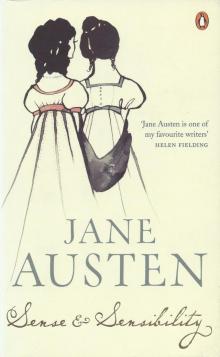 Sense and Sensibility
Sense and Sensibility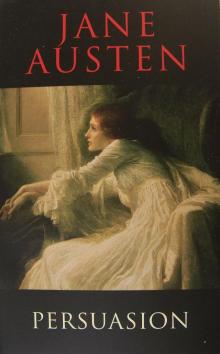 Persuasion
Persuasion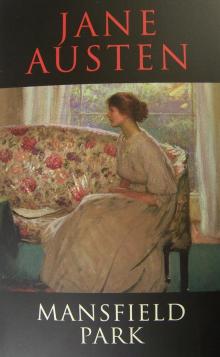 Mansfield Park
Mansfield Park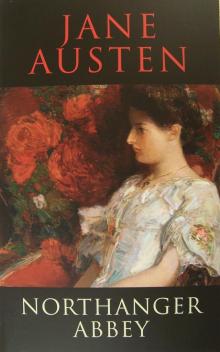 Northanger Abbey
Northanger Abbey Pride and Prejudice and Zombies
Pride and Prejudice and Zombies Pride and Prejudice
Pride and Prejudice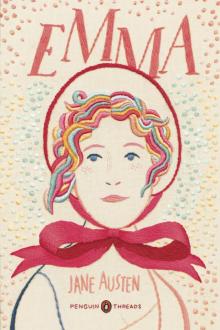 Emma
Emma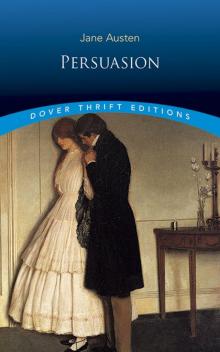 Persuasion (Dover Thrift Editions)
Persuasion (Dover Thrift Editions)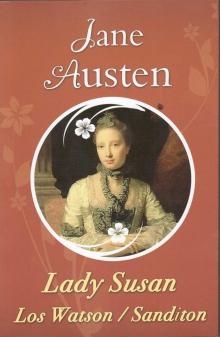 Lady Susan
Lady Susan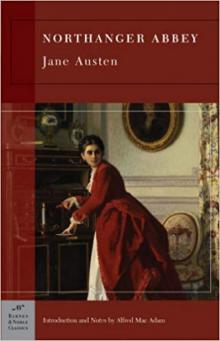 Northanger Abbey (Barnes & Noble Classics)
Northanger Abbey (Barnes & Noble Classics)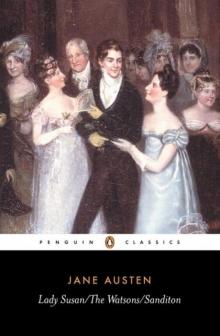 Lady Susan, the Watsons, Sanditon
Lady Susan, the Watsons, Sanditon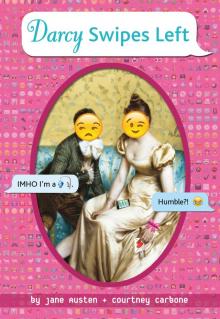 Darcy Swipes Left
Darcy Swipes Left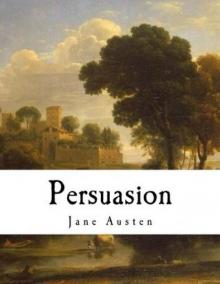 Persuasion: Jane Austen (The Complete Works)
Persuasion: Jane Austen (The Complete Works)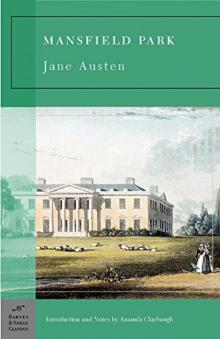 Mansfield Park (Barnes & Noble Classics Series)
Mansfield Park (Barnes & Noble Classics Series) Sense and Sensibility (Barnes & Noble Classics Series)
Sense and Sensibility (Barnes & Noble Classics Series)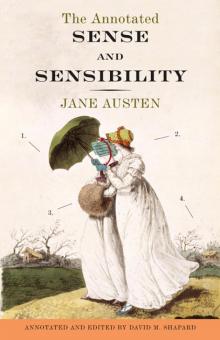 The Annotated Sense and Sensibility
The Annotated Sense and Sensibility Pride and Prejudice (Clandestine Classics)
Pride and Prejudice (Clandestine Classics)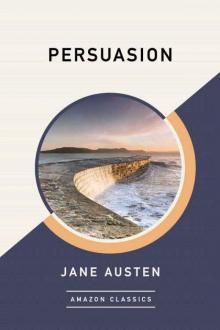 Persuasion (AmazonClassics Edition)
Persuasion (AmazonClassics Edition)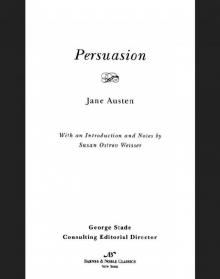 Persuasion (Barnes & Noble Classics Series)
Persuasion (Barnes & Noble Classics Series)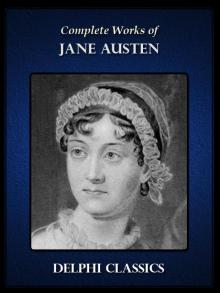 Complete Works of Jane Austen
Complete Works of Jane Austen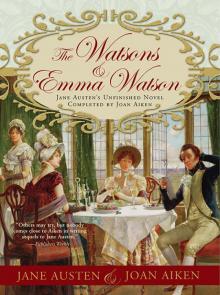 The Watsons and Emma Watson
The Watsons and Emma Watson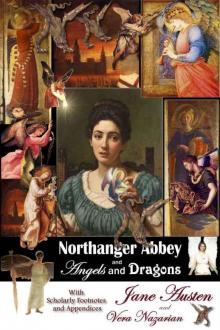 Northanger Abbey and Angels and Dragons
Northanger Abbey and Angels and Dragons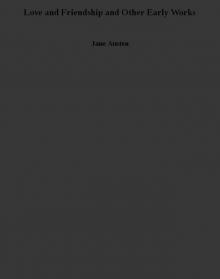 Love and Friendship and Other Early Works
Love and Friendship and Other Early Works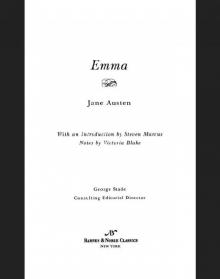 Emma (Barnes & Noble Classics Series)
Emma (Barnes & Noble Classics Series) Sanditon
Sanditon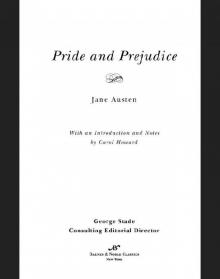 Pride and Prejudice (Barnes & Noble Classics Series)
Pride and Prejudice (Barnes & Noble Classics Series)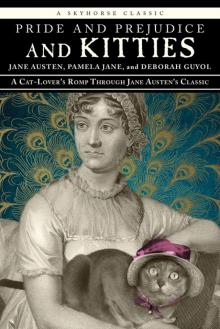 Pride and Prejudice and Kitties
Pride and Prejudice and Kitties The Annotated Northanger Abbey
The Annotated Northanger Abbey Oxford World’s Classics
Oxford World’s Classics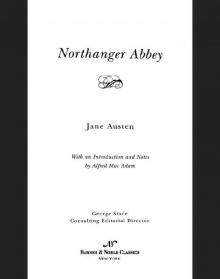 Northanger Abbey (Barnes & Noble Classics Series)
Northanger Abbey (Barnes & Noble Classics Series)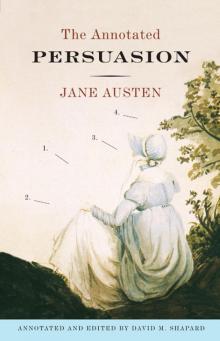 The Annotated Persuasion
The Annotated Persuasion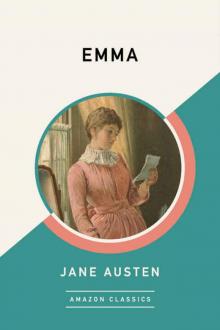 Emma (AmazonClassics Edition)
Emma (AmazonClassics Edition)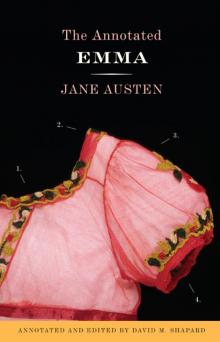 The Annotated Emma
The Annotated Emma The Annotated Mansfield Park
The Annotated Mansfield Park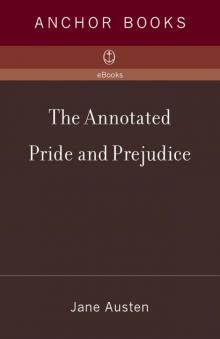 The Annotated Pride and Prejudice
The Annotated Pride and Prejudice